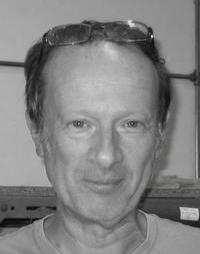
Convenor: Peter Hubbard
I did my Ph.D. at Sheffield University (UK), investigating renal handling of sodium by dopamine. Initiation into electrophysiology began during post-doctoral
work at Manchester University (UK) investigating Dahlgren cell activity using ‘sharp electrode’ recording, followed by patch-clamping on 5-HT3 receptors at the LMB (Cambridge, UK). At CCMAR (Portugal), I use in vivo and in vitro electrophysiological (and other) techniques to investigate olfaction in fish – especially pheromones, but also inorganic cations - and the physiological and behavioural responses to such odorants. My ultimate aim is to ‘trace’ the whole pathway from cause (sensory detection) to effect (physiological and/or behavioural changes) for widely different stimuli.
Deputy Convenor: Cosima Porteus
Group description
Neurobiology is a truly integrative science comprising molecular, genetic, neuroanatomical, physiological and behavioural approaches to understanding nervous system functioning at multiple levels of organisation. Events at the cellular level through to whole animal behaviour provide a holistic view of the neurobiology of all animal groups. Traditional methods of measuring nervous system responses using imaging, histology and electrophysiology are combined with contemporary genomic and genetic techniques to elucidate causal mechanisms of animal behaviour.
As a multidisciplinary group, neurobiology attracts scientists from a wide range of fields including anatomy, behaviour, comparative physiology, psychology, genetics and zoology (non-biomedical). The ultimate aim of the neurobiology interest group is to engage a diverse array of scientists who adopt different approaches with a common goal of addressing current topics in neuroscience, with a focus on evolutionary, comparative and ecological questions.
The ultimate aim of the neurobiology group is to engage a diverse array of scientists who adopt different approaches with a common goal of addressing current topics in neuroscience.
